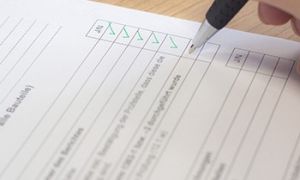Painting with toddlers and preschoolers can be a wonderful and enriching activity. It not only stimulates their creativity but also supports their overall development. The following article provides information on the Benefits Of Painting, Appropriate Painting Materials and Resources For Children, Painting Experiences With Toddlers, Painting Experiences For Toddlers, Painting Experiences For Preschoolers, Linking To The EYLF and more.
Benefits Of Painting
Painting offers numerous benefits for children in early childhood. It is a valuable activity that supports their development in various ways:
- Creativity and Self-Expression:
Painting provides a medium for children to express their thoughts, feelings, and ideas. It encourages creativity and imagination, allowing them to create unique works of art. - Fine Motor Skills:
Holding a paintbrush and making brushstrokes helps develop fine motor skills and hand-eye coordination. These skills are essential for writing and other tasks requiring precise hand movements. - Cognitive Development:
Painting involves decision-making, problem-solving, and planning. Children learn to think critically about color choices, shapes, and composition, enhancing their cognitive abilities. - Emotional Expression:
Painting allows children to express their emotions in a non-verbal way. It can be therapeutic, helping them process feelings and reduce stress. - Sensory Experience:
The tactile experience of painting—feeling the texture of paint, the brush, and the paper—engages children's senses. This sensory stimulation is crucial for their overall sensory development. - Language Development:
Discussing their artwork helps children develop language skills. They learn to describe their paintings, share stories, and expand their vocabulary. - Cultural Awareness:
Painting can introduce children to different cultures and art forms. They can learn about various artistic traditions and styles, fostering an appreciation for diversity. - Focus and Concentration:
Engaging in painting projects helps children develop focus and concentration. They learn to pay attention to details and complete tasks. - Social Skills:
Group painting activities encourage collaboration and sharing. Children learn to work together, take turns, and appreciate each other's work. - Self-Confidence:
Completing a painting project gives children a sense of accomplishment. It boosts their self-esteem and confidence in their abilities.
Appropriate Painting Materials and Resources For Children
When selecting painting materials and resources for children, it's important to choose items that are safe, non-toxic, and suitable for their developmental stage. Here are some appropriate painting materials and resources for young children:
Basic Materials:
- Washable Tempera Paint:
Non-toxic and easily washable, making cleanup simple. - Watercolor Paints:
Ideal for creating lighter, translucent effects. - Finger Paints:
Safe and easy to use, allowing for tactile exploration.
Brushes and Tools:
- Assorted Paintbrushes:
Various sizes and shapes to encourage different techniques. - Foam Brushes and Rollers:
Fun for creating textures and large strokes. - Sponges and Stamps:
Great for adding patterns and shapes. - Cotton Swabs and Toothbrushes:
Unique tools for experimenting with new textures.
Surfaces to Paint On:
- Paper:
Heavyweight paper that can withstand wet paint without tearing. - Canvas Panels:
Sturdy surfaces for more advanced painting projects. - Cardboard:
Recycled materials can make great canvases.
Additional Resources:
- Easels:
Adjustable easels that fit children's heights. - Smocks or Aprons:
Protect clothing from paint splatters. - Palettes and Containers:
For mixing and holding paint. - Water Cups and Paper Towels:
Essential for rinsing brushes and quick clean-up. - Art Drying Racks:
Space for drying completed works without smudging.
Safety Considerations:
- Non-Toxic Materials:
Always ensure that all materials are labeled as non-toxic and safe for children. - Supervision:
Adult supervision is necessary to ensure safe use of materials and tools.
By providing a variety of painting materials and resources, you can support children's creativity, fine motor skills, and cognitive development in a safe and engaging way. ?
Painting Activities For Toddlers
- Finger Painting:
Materials: Non-toxic finger paints, large sheets of paper or a roll of butcher paper.
Activity: Let toddlers explore painting with their hands and fingers. This sensory experience is not only fun but also helps develop fine motor skills. - Sponge Painting:
Materials: Sponges cut into various shapes, washable paint, paper.
Activity: Dip sponges into paint and press them onto the paper to create interesting patterns and textures. - Bubble Wrap Printing:
Materials: Bubble wrap, paint, paper.
Activity: Wrap a piece of bubble wrap around a small rolling pin or cardboard tube, dip it in paint, and roll it onto the paper for a unique textured effect. - Nature Painting:
Materials: Leaves, flowers, small sticks, paint, paper.
Activity: Use natural objects as paintbrushes or stamps to create prints and patterns. This activity can be combined with a nature walk to collect materials. - Cotton Swab Painting:
Materials: Cotton swabs, paint, paper.
Activity: Toddlers can use cotton swabs to make dots, lines, and patterns. This activity helps with fine motor control and precision. - Water Painting:
Materials: A bucket of water, paintbrushes, a chalkboard or outdoor pavement.
Activity: On a warm day, let toddlers "paint" with water. It's mess-free and a great way to practice brush control.
Painting Activities For Preschoolers
Painting with preschoolers can be a delightful and enriching experience. It offers a wonderful opportunity for them to explore their creativity, develop essential skills, and have fun. Here are some engaging painting activities and tips for painting with preschoolers:
- Squeeze Bottle Painting:
Materials: Washable paint in squeeze bottles, large sheets of paper or canvas.
Activity: Let preschoolers squeeze paint onto the paper or canvas, creating colorful and dynamic designs. This activity helps develop hand strength and control. - Marble Painting:
Materials: Marbles, paint, a shallow box or tray, paper.
Activity: Place a sheet of paper in the tray, dip marbles in paint, and let preschoolers roll the marbles around to create abstract art. This activity is great for fine motor skills and coordination. - Blow Painting:
Materials: Straws, liquid paint, paper.
Activity: Place drops of paint on the paper and have preschoolers blow through the straws to spread the paint. This creates interesting patterns and encourages breath control. - Salt Painting:
Materials: Glue, salt, watercolor paints, paper.
Activity: Preschoolers can draw designs with glue on the paper, sprinkle salt over the glue, and then add watercolor paint. The salt absorbs the paint, creating beautiful textures. - Collaborative Mural:
Materials: Large roll of butcher paper, various paints, brushes, and tools.
Activity: Spread out a large sheet of paper and invite preschoolers to work together to create a giant mural. This activity fosters teamwork and a sense of community.
How To Encourage Young Children To Paint
Encouraging young children to paint can foster creativity, boost their confidence, and support their overall development. Here are some effective ways to inspire young children to enjoy painting:
- Create a Welcoming Environment
- Accessible Materials: Keep painting supplies within easy reach. This includes non-toxic paints, brushes, paper, and smocks.
- Designated Space: Set up a dedicated painting area with child-sized furniture and ample space for creativity.
- Introduce Painting Through Play
- Start with Fun: Introduce painting as a playful activity. Use finger paints, sponge stamps, or even paint with ice cubes.
- Incorporate Favorite Themes: Use themes that interest the child, such as animals, cars, or favorite characters, to make painting more engaging.
- Provide Encouragement and Praise
- Positive Reinforcement: Praise their efforts and creativity, focusing on the process rather than the final product.
- Ask Questions: Show interest in their work by asking open-ended questions about their painting.
- Offer Simple Guidance
- Demonstrate Techniques: Show basic painting techniques and let them experiment.
- Use Visuals: Provide picture books or simple art examples to inspire ideas.
- Incorporate Painting into Daily Routine
- Regular Sessions: Make painting a regular part of the daily or weekly routine.
- Combine with Stories: Read a story and encourage children to paint scenes or characters from the book.
- Encourage Experimentation and Exploration
- Mix Colors: Allow children to mix colors and explore different shades and hues.
- Use Various Tools: Introduce different painting tools like brushes, sponges, and even household items like cotton swabs and leaves.
- Be Patient and Supportive
- Let Them Lead: Follow the child's lead and allow them to express their creativity freely.
- Celebrate Creativity: Display their artwork prominently to show that their efforts are valued.
- Incorporate Learning Opportunities
- Teach About Colors and Shapes: Use painting as an opportunity to teach children about colors, shapes, and even patterns.
- Environmental Themes: Introduce themes like nature and recycling to combine art with environmental awareness.
Linking EYLF To Painting
The Early Years Learning Framework (EYLF) emphasizes the importance of art in fostering holistic development in children. Here are some ways to link painting activities to the EYLF learning outcomes:
Learning Outcome 1: Children Have a Strong Sense of Identity
-
Art helps children develop their selfhood by allowing them to express their imagination and interests. Through painting, children can exercise choice in materials and techniques, fostering autonomy and resilience.
Learning Outcome 2: Children Are Connected with and Contribute to Their World
-
Encouraging creativity and open-mindedness: By showing that there is no right or wrong way to create art, children learn to appreciate different perspectives and develop respect for diversity.
Learning Outcome 3: Children Have a Strong Sense of Well-being
-
Promoting mental health: Painting provides a creative outlet for children to express their emotions and relieve stress. It also helps build social skills such as sharing and cooperation.
Learning Outcome 4: Children Are Confident and Involved Learners
-
Encouraging exploration and problem-solving: Painting allows children to use their creative imaginations, collaborate with peers, and develop problem-solving skills.
By integrating painting activities into your early childhood program, you can support children's development across multiple domains and help them build a strong sense of identity, well-being, and connection to the world around them.
Further Reading
Art and Craft Descriptions With Links To The EYLF
Linking Art To The EYLF Learning Outcomes
Benefits Of Art and Craft
Encouraging Children With Painting
Painting Without A Paintbrush
Vincent Van Gogh Art Projects For Children
Pablo Picasso Art Projects For Children
Salvador Dali Art Projects For Children
Jackson Pollock Art Projects For Children
Art With Babies and Toddlers
Andy Warhol Art Projects For Children
Henri Matisse Art Projects For Children
Wassily Kandinsky Art Projects For Children


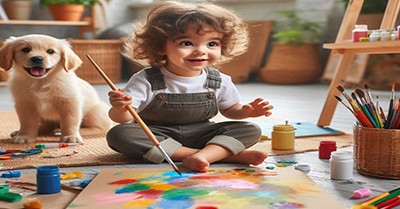
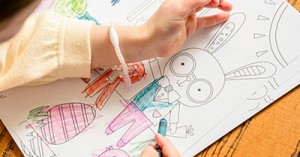
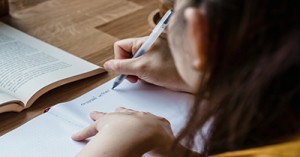
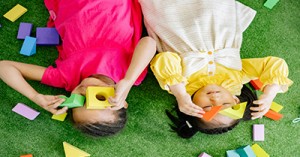

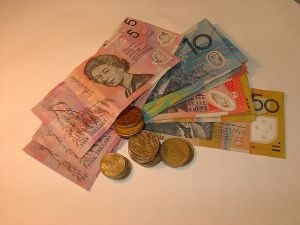 As an Educator in Australia, your pay rate falls under the Children’s Services Award 2010. This award states the minimum amount that an employer can
As an Educator in Australia, your pay rate falls under the Children’s Services Award 2010. This award states the minimum amount that an employer can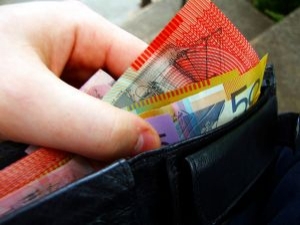 When working as a qualified Early Childhood Teacher (with a university degree) within a service, your rate of pay will come from the Educational Services
When working as a qualified Early Childhood Teacher (with a university degree) within a service, your rate of pay will come from the Educational Services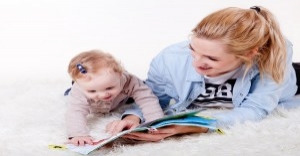 When working as a Diploma Qualified Educator your pay rate is from the Children's Services Award 2010. This Award states your minimum rate of pay
When working as a Diploma Qualified Educator your pay rate is from the Children's Services Award 2010. This Award states your minimum rate of pay When working as a Cert 3 Qualified Educator, your pay rate is from the Children's Services Award 2010. This Award states your minimum rate of
When working as a Cert 3 Qualified Educator, your pay rate is from the Children's Services Award 2010. This Award states your minimum rate of Educational Leaders play a crucial role in their early childhood service by ensuring that the educational program aligns with best practices and supports the holistic
Educational Leaders play a crucial role in their early childhood service by ensuring that the educational program aligns with best practices and supports the holistic In early childhood education and care, ratios are more than a technicality—they are a frontline safeguard. Every child deserves responsive supervision, emotional connection, and developmental
In early childhood education and care, ratios are more than a technicality—they are a frontline safeguard. Every child deserves responsive supervision, emotional connection, and developmental With the new national child safety reforms kicking in on 1 September 2025, early childhood services like yours have a real opportunity to lead the
With the new national child safety reforms kicking in on 1 September 2025, early childhood services like yours have a real opportunity to lead the Here’s a comprehensive Mobile Phone and Smart Watch Policy tailored for early childhood education and care (ECEC) services in Australia, aligned with the latest 2025
Here’s a comprehensive Mobile Phone and Smart Watch Policy tailored for early childhood education and care (ECEC) services in Australia, aligned with the latest 2025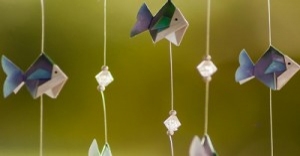 The Sea of Fish Challenge is a national initiative that invites children, educators, families, and communities to create and display fish artworks as a symbol
The Sea of Fish Challenge is a national initiative that invites children, educators, families, and communities to create and display fish artworks as a symbol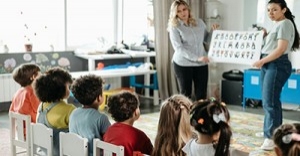 Across the early childhood education and care sector, educators are sounding the alarm: current staffing ratios are insufficient to deliver safe, meaningful, and developmentally appropriate
Across the early childhood education and care sector, educators are sounding the alarm: current staffing ratios are insufficient to deliver safe, meaningful, and developmentally appropriate